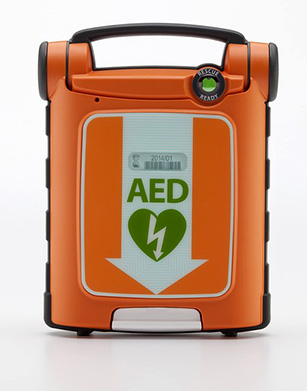Getting athletes the calcium they need
Teenagers are in a critical period of bone development, so be diligent with nutrition

Of the 40-plus nutrients required by the human body, calcium takes center stage. While it’s well known that adequate dietary calcium is vital for building strong bones and warding off osteoporosis, the benefits of consuming calcium-rich foods don’t stop there.
Scientists now know that calcium plays a pivotal role in other health protective activities, such as improving blood pressure (high blood pressure is a major risk factor for often-fatal heart attacks and strokes) and thwarting colon cancer (the second leading cause of death from cancer in the United States). It’s also possible that calcium (supplied by dairy foods) may help the body to regulate and keep off unwanted pounds.Calcium-rich dairy foods traditionally have shared the limelight with any breaking news on calcium. Today, however, foods fortified with calcium, such as tofu and orange juice, as well as other calcium-containing foods such as dark green leafy vegetables and dried beans, increasingly clamor for their share of the attention. Make no bones about it — it’s easier than ever to get one’s proper daily dose of required calcium. Young athletes (ages 13 to 18) especially benefit from being given sound information regarding calcium as peak bone mass is achieved during this time.
Calcium rules
Ninety-nine percent of all calcium in the human body is stored in the skeletal system. Via hormonal signals, calcium continually moves in and out of bones in order to maintain a constant tightly-controlled calcium level in blood, muscles and the fluid in between cells. That’s because along with building strong bones and teeth, calcium also helps muscles to contract, nerves to send messages and blood to clot properly.
Adults require 1,000 milligrams of calcium a day, with teens needing about 1,300 milligrams from ages 9 to 18. Bone mass accumulates rapidly during adolescence, and it’s from this “bone bank” that calcium “withdrawals” will be made.
Aging baby-boomers (age 51 and older) will want to push their daily calcium intake to 1,200 milligrams to ward off osteoporosis, a disease marked by frail bones and an increased risk of fractures as bone loss outpaces bone formation. Consuming adequate calcium at this stage in life helps to slow the rate of bone loss.
At-risk groups
Certain groups are at risk for not meeting the daily-recommended intake of calcium, which, over the long-term, increases their risk of negative health consequences. Overall, girls and women are less likely than males to get adequate amounts of calcium from food.
 Those diagnosed with (or believe they have) a milk allergy or are lactose intolerant, and vegans, as well as physically active females caught in the “female athlete triad” are also among those most likely to need extra calcium. The triad is a combination of serious medical concerns initiated by an energy imbalance (consuming too few calories to support activity level), which leads to irregular or absent menstrual periods (due to less estrogen being produced) and an increased risk of associated bone health problems, such as stress fractures.
Those diagnosed with (or believe they have) a milk allergy or are lactose intolerant, and vegans, as well as physically active females caught in the “female athlete triad” are also among those most likely to need extra calcium. The triad is a combination of serious medical concerns initiated by an energy imbalance (consuming too few calories to support activity level), which leads to irregular or absent menstrual periods (due to less estrogen being produced) and an increased risk of associated bone health problems, such as stress fractures.
Exercise-induced amenorrhea (menstrual periods stop for three consecutive months or fail to begin by age 15) generally results in decreased bone mass. Taking extra calcium (1,500 milligrams from supplements daily) does not fully protect bones, nor does it resolve other triad-associated risks.
Sources of calcium
Three to four servings of calcium-rich dairy foods are a simple and practical way to meet daily calcium needs (plus unlike calcium supplements, they supply other key nutrients such as protein, riboflavin and vitamin D). A cup of yogurt or milk (any type, including flavored milks like chocolate) or one and one-half ounces of cheese (about the size of a ping pong ball) delivers 300 milligrams. Calcium-fortified soy or rice milk is a good substitute for those with a milk allergy or who are lactose-intolerant. For those wary of drinking milk due to concerns over antibiotics, hormones and pesticides, organically produced dairy products alleviate this issue.
Nondairy calcium sources include dried beans (black, pinto, etc.) and lentils, canned sardines and salmon (with bones) and calcium-fortified foods such as breakfast cereal, orange juice, soy and rice milks and tofu (made with calcium sulfate), as well as dark-green leafy vegetables, such as kale, bok choy, collards and turnip greens, almonds, soy nuts and figs.
Determining the amount of calcium a serving of a particular food provides is easy. Check the food’s nutrition facts label and add a zero to the listed percent daily value (%DV) for calcium. For example, a food supplying 25 percent of the daily value provides 250 milligrams of calcium.
Power-up with calcium
Each of the following contains at least 300 milligrams of calcium per serving.
- 1 cup (8 ounces) of milk (any type, including flavored milks)
- 1 cup of yogurt
- 1.5 ounces of cheese
- 2 cups of cottage cheese
- 1 ½ cups of ice cream or frozen yogurt
- 1 cup of fortified soy, rice or almond milk
- 3 cups of cooked broccoli
- 1 ½ cups of canned baked beans
- 5 ounces of firm tofu (check the label, as it must be prepared with calcium sulfate)
- 1 cup of fortified orange juice
- 1 ½ cups of cooked dark leafy greens-kale, collards, turnip greens
- ½ cup of soy nuts
- 11 dried figs
- 4 ounces of canned salmon or sardines (with bones)
- Fortified breakfast cereals (check label for amounts)





